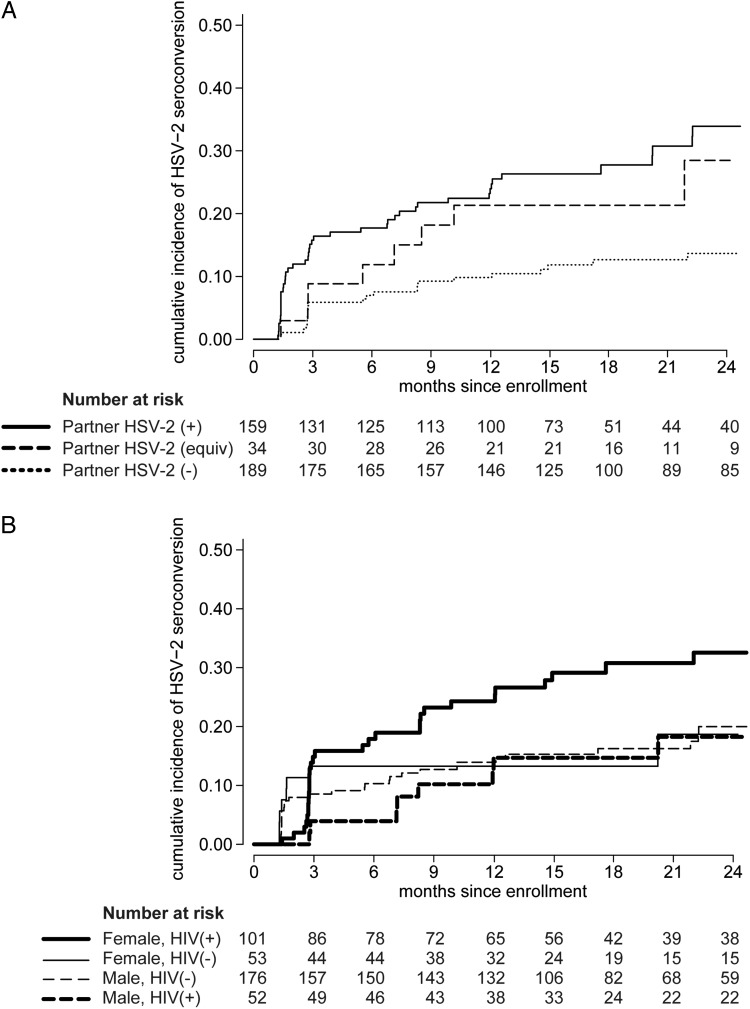Figure 1.
Cumulative incidence of HSV-2 infection. Participants in stable HIV-1-discordant relationships were tested for HSV-2 at enrollment and followed quarterly for 2 years. Incidence of HSV-2 seroconversion was assessed for those who were HSV-2 negative or equivocal at enrollment. A, Kaplan Meier curves show the cumulative incidence of HSV-2 seroconversion for those with ( ) an initially HSV-2 seropositive partner, (
) an initially HSV-2 seropositive partner, (

 ) an initially HSV-2 equivocal partner, and (• • •) an initially HSV-2 seronegative partner. B, Kaplan Meier curves show the cumulative incidence of HSV-2 seroconversion for (
) an initially HSV-2 equivocal partner, and (• • •) an initially HSV-2 seronegative partner. B, Kaplan Meier curves show the cumulative incidence of HSV-2 seroconversion for ( ) HIV-1-infected women, (—) uninfected women, (– – –) uninfected men, and (
) HIV-1-infected women, (—) uninfected women, (– – –) uninfected men, and (

 ) infected men. Abbreviations: HIV-1, human immunodeficiency virus type 1; HSV-2, herpes simplex virus type 2.
) infected men. Abbreviations: HIV-1, human immunodeficiency virus type 1; HSV-2, herpes simplex virus type 2.

